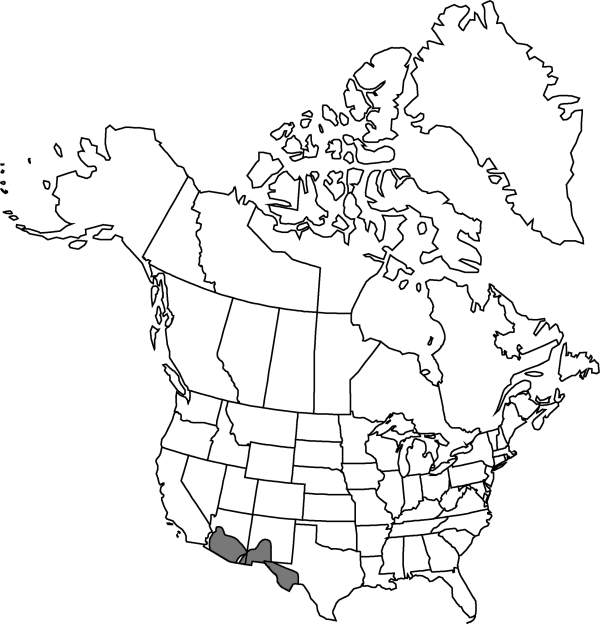Peniocereus greggii
Contr. U.S. Natl. Herb. 12: 428. 1909.
Shrubs, erect to sprawling, usually inconspicuous. Roots turnip-shaped, usually 15–30 × 5–12 cm (much larger ones known). Stems gray-green to gray, simple or with 2–5 branches, 40–120 (–300) cm, distally 8–20 mm diam., at midlength ca. 10 mm diam., often narrowed toward base; wood hollow, solid-surfaced cylinders, 4–7 mm diam.; ribs 4–6, prominent; areoles (3.5–) 12 (–15) mm apart along ribs, circular to elliptic, 2–5 × 2 mm. Spines (9–) 11–15 (–17) per areole, usually in 3 vertical rows; abaxial 3–5 spines appressed, yellowish white throughout or only at tips, to 3 mm, puberulent when young; adaxial spines black, subulate, to 1 mm. Flowers: nocturnal (remaining open next day), 15–25 cm; scales of flower tubes green, tipped red or brown; outer tepals greenish white with brown to reddish midstripes; inner tepals white or lightly tinged cream or pink (or rarely all rose-pink), lanceolate-attenuate, apiculate, 4–7 cm, attenuate to mucronate; stamens 2.5 cm; anthers cream-yellow, 2 mm; style white, 10–14 cm; stigma lobes 9–11, white. Fruits bright red, darkening in age, ellipsoid, 60–90 × 40–50 mm. Seeds 3–4 × 2–2.5 mm. 2n = 22.
Distribution

Ariz., N.Mex., Tex., w Mexico
Discussion
Varieties 2 (2 in the flora).
Selected References
None.
Key
| 1 | Areoles elliptic, 4-5 × 2 mm; adaxial spines tending to be directed toward tip of plant; abaxial spines directed toward base of plant; flowers 15-17 × 5-6 cm | Peniocereus greggii var. greggii |
| 1 | Areoles nearly circular, 2 × 2 mm; spines radially spreading; flowers 22-25 × 7-8 cm | Peniocereus greggii var. transmontanus |